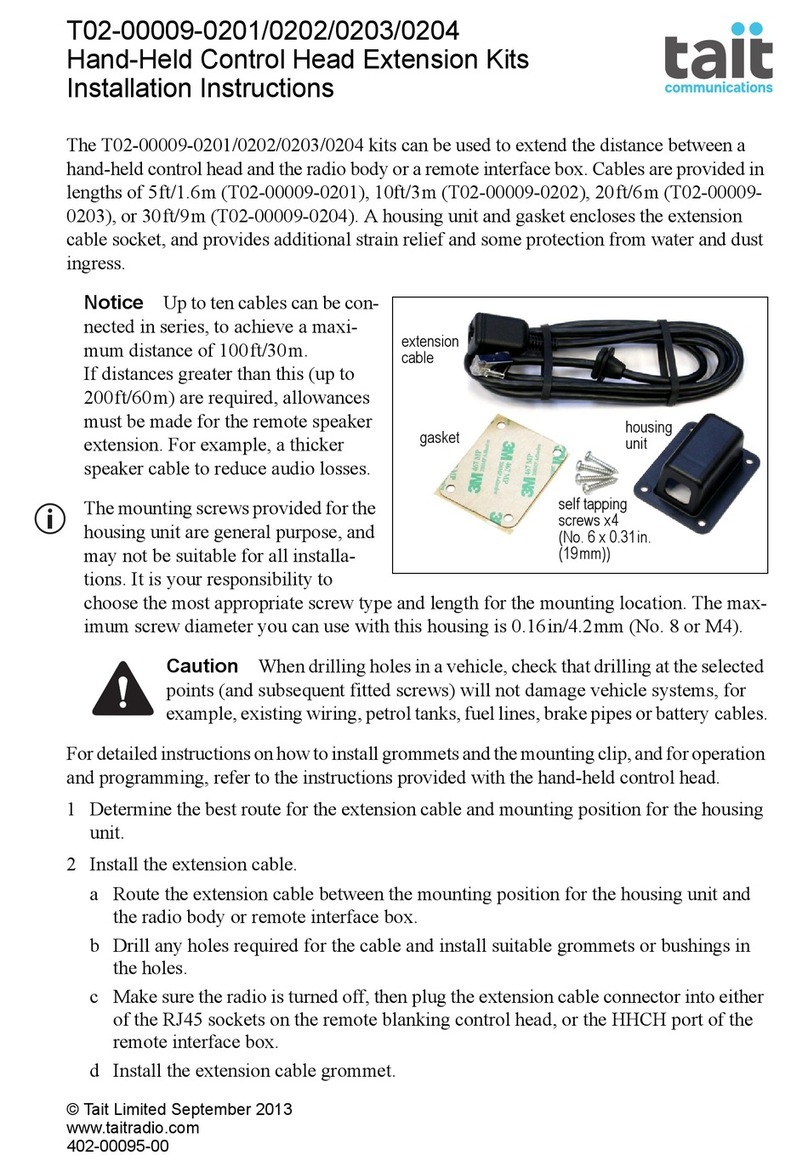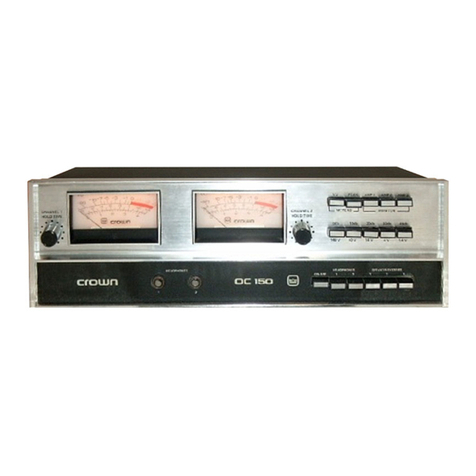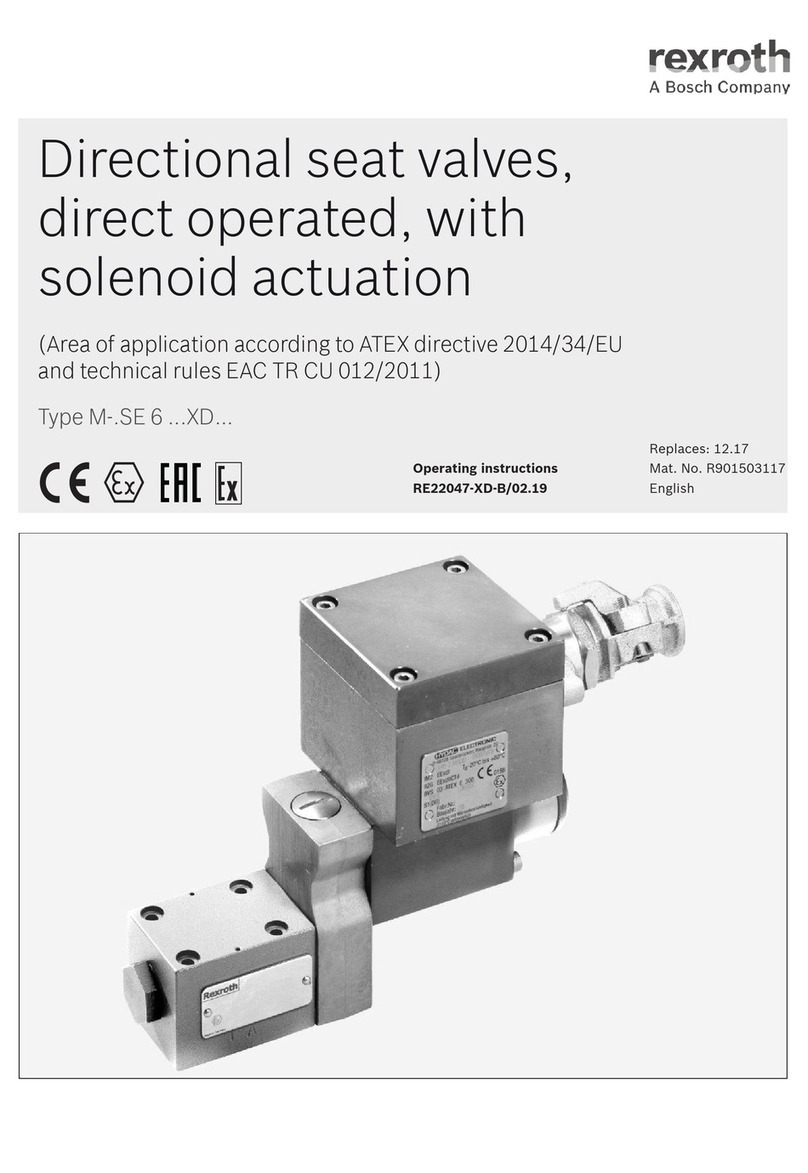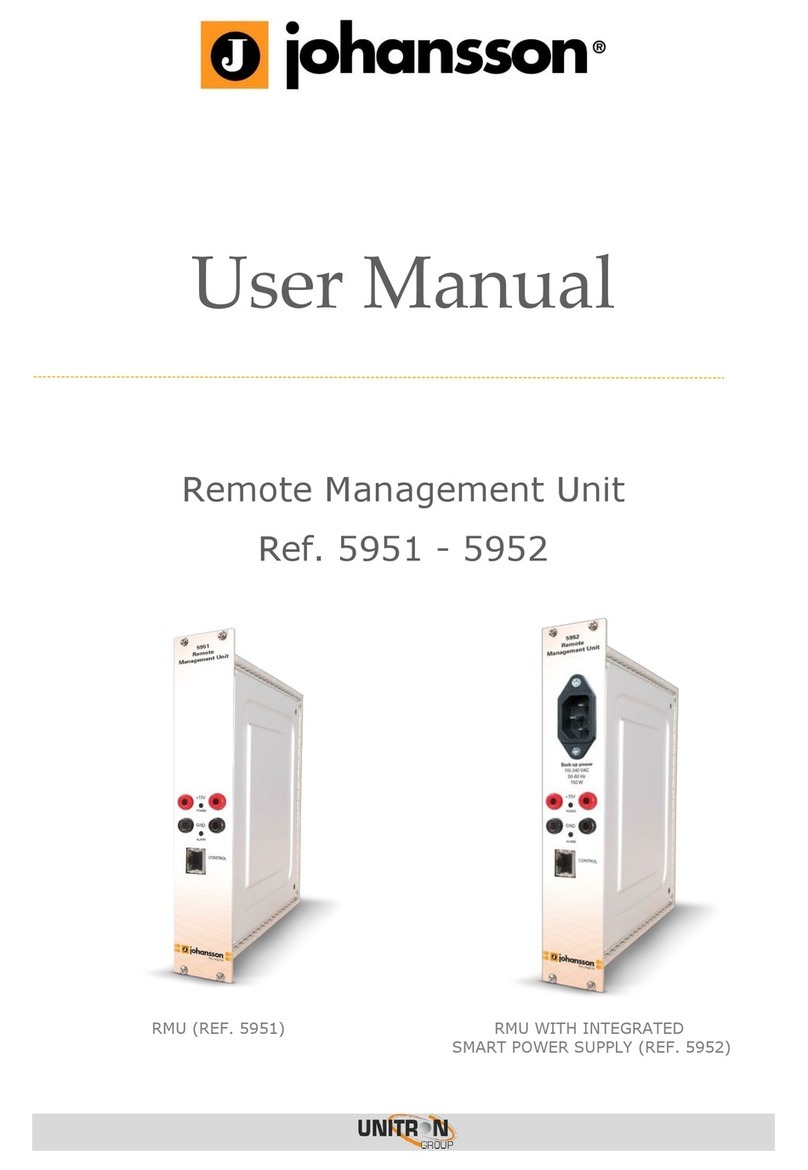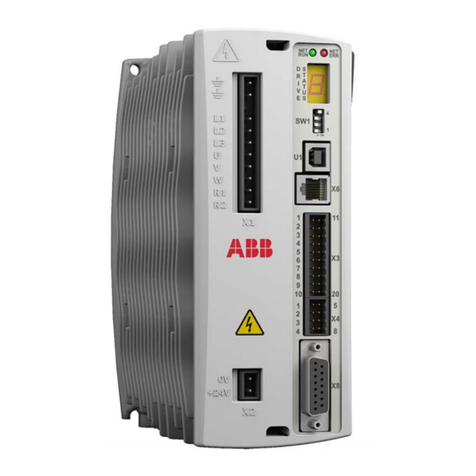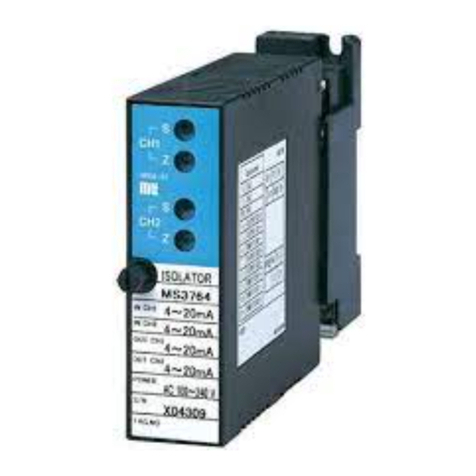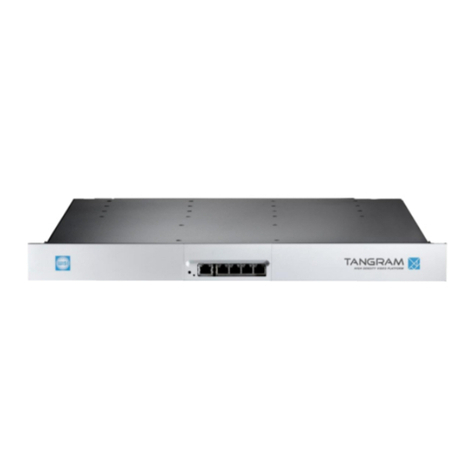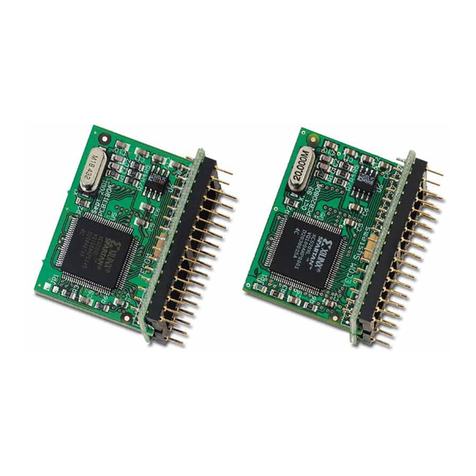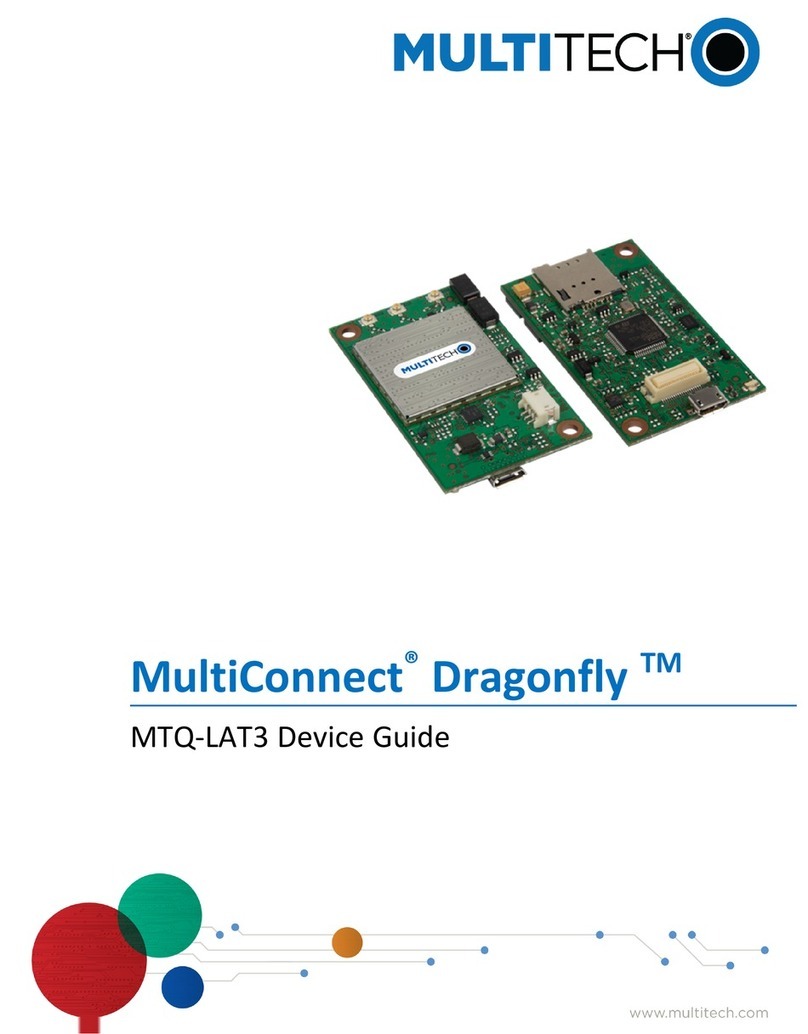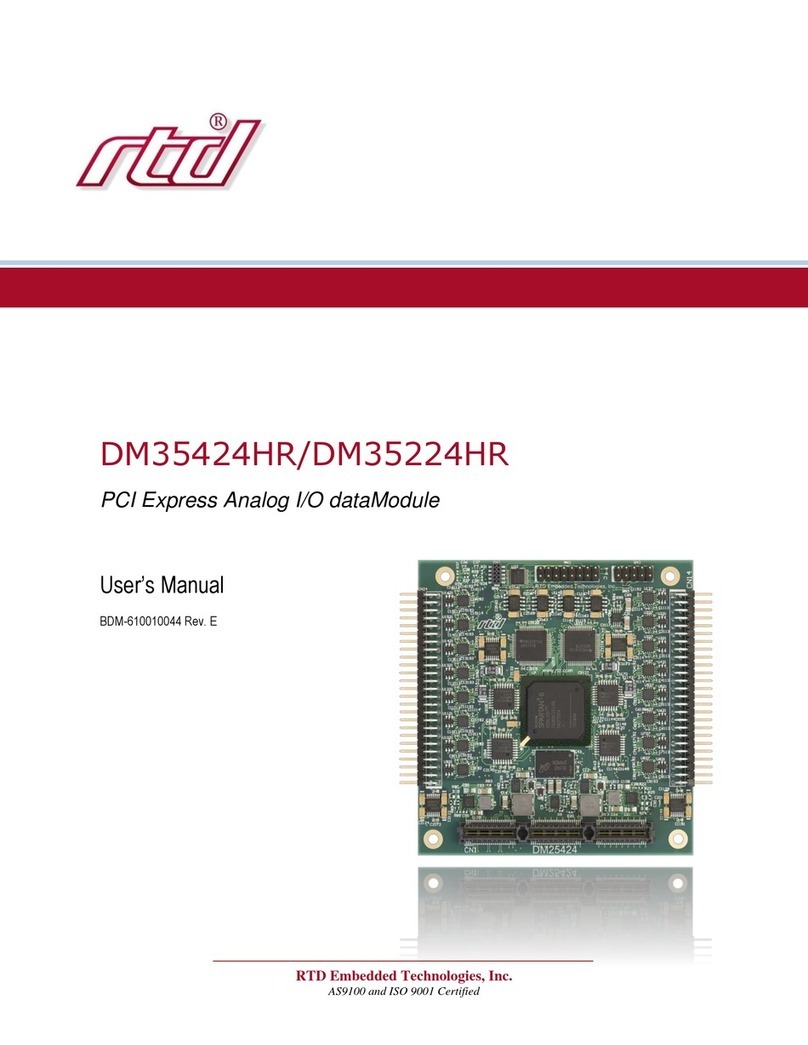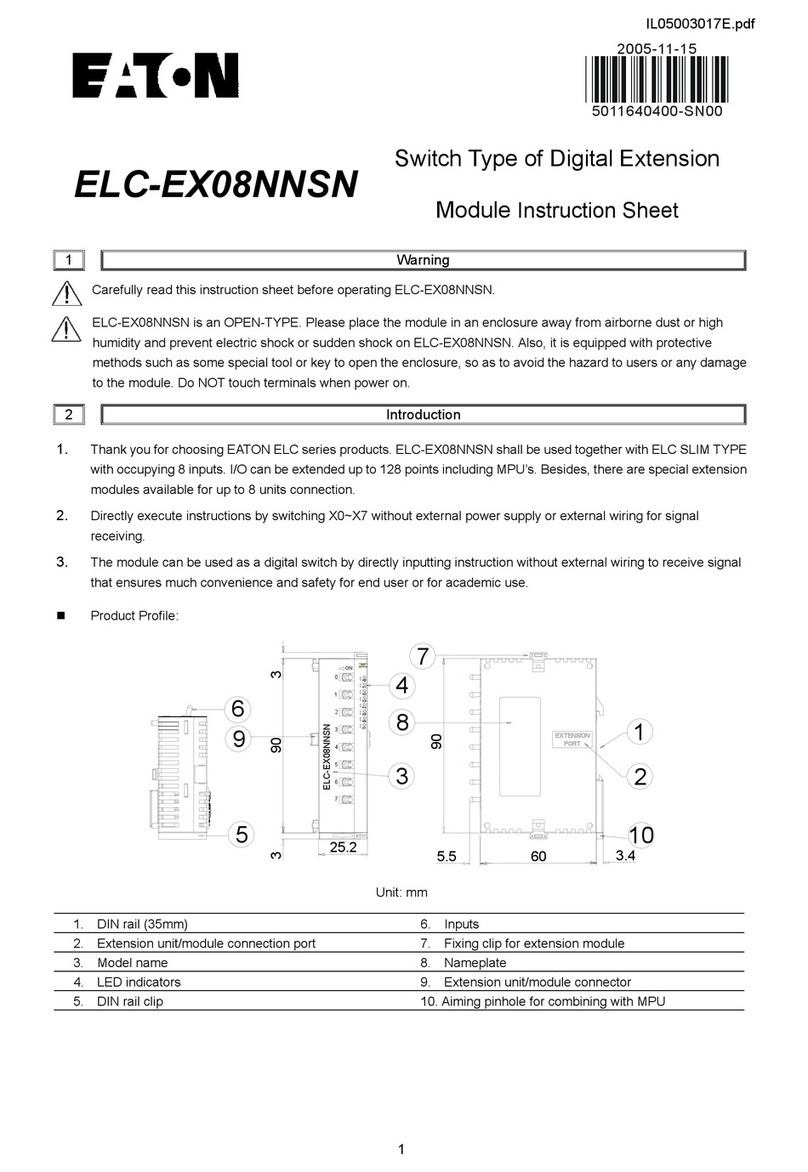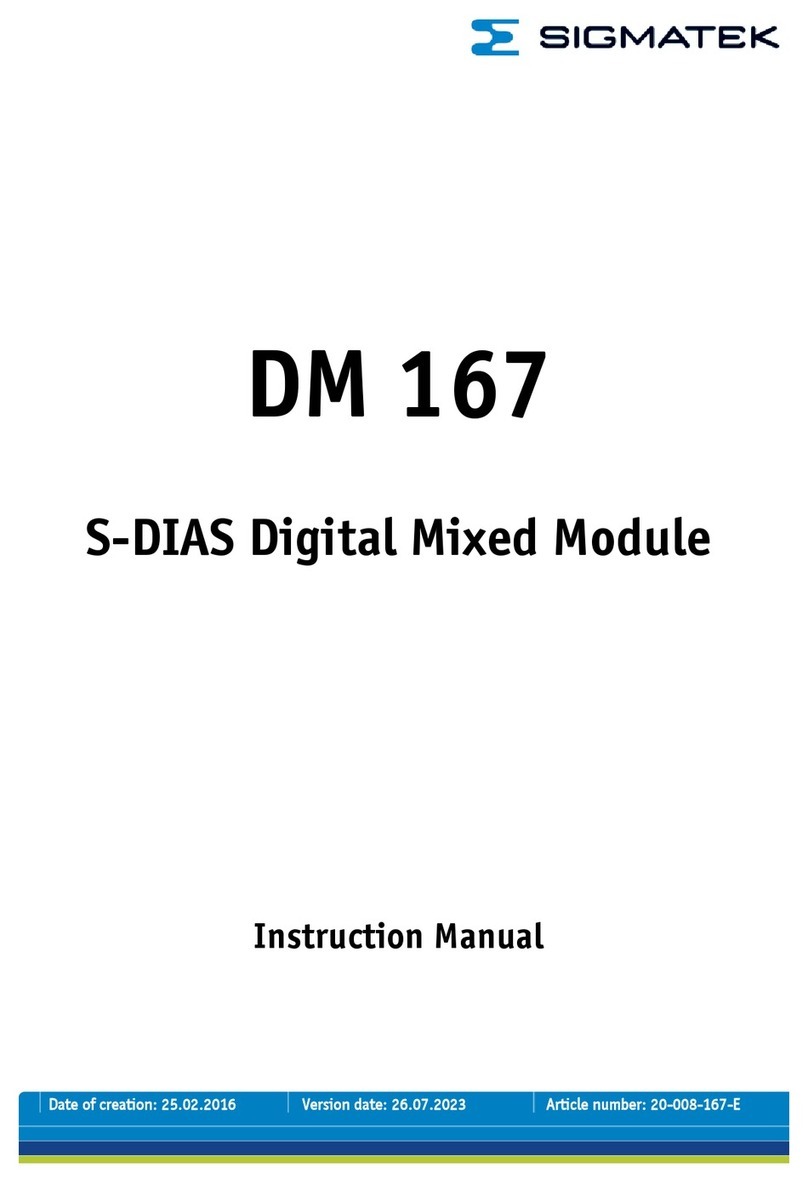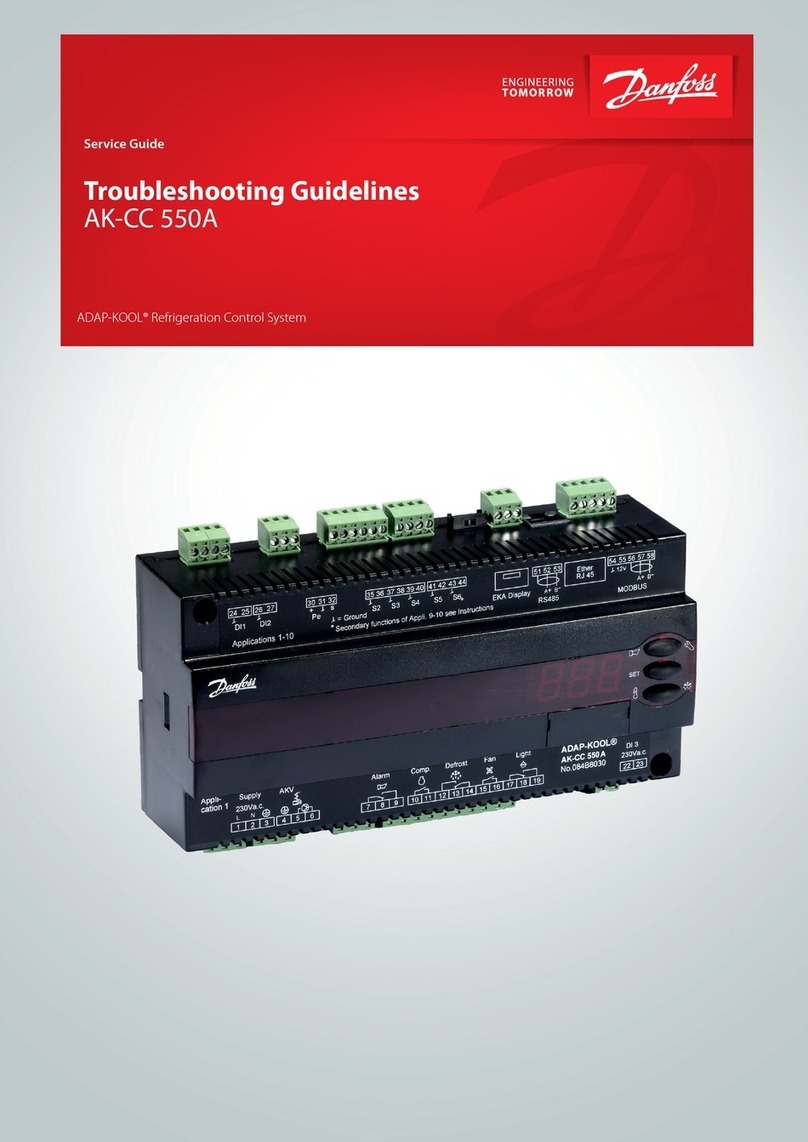Tait TaitNet T1511 User manual

MPT 1327
Trunked Radio Networks
Scope of Manual
This manual provides installation and service information for the T1511 Channel Control
Module when operating with the software identified as “Q1711MIN version 7.05”. This
manual may apply to newer versions of software.
MNA-00005-01
T1511 Channel Control Module
Installation Manual
© Tait Electronics Limited
June 2005

Page ii Initial pages
T1511 Channel Control Module MNA-00005-01
Installation Manual © Tait Electronics Limited 2005
TAIT
Radio Communications
Tait Radio Communications http://www.taitworld.com
Corporate Head Office – New Zealand
Tait Electronics Ltd
PO Box 1645
Christchurch
E-mail: info@taitworld.com
Website: http://www.taitworld.com
Technical Support
E-mail: support@taitworld.com
Website: http://www.support.taitworld.com
Tait North America
Regional Head Office –United States of
America
Tait North America Inc
E-mail: usa@taitworld.com
Canada
Tait North America Inc
E-mail: canada@taitworld.com
Latin America
Tait Latin America
E-mail: latinamerica@taitworld.com
Tait Europe
Regional Head Office –United Kingdom
Tait Mobile Radio Ltd
E-mail: teusales@tait.co.uk
Tait North Asia
Regional Head Office –Hong Kong
Tait Mobile Radio (Hong Kong) Ltd
E-mail: hongkong@taitworld.com
Beijing
Tait Mobile Radio (Hong Kong) Ltd
E-mail: beijing@taitworld.com
Tait South Asia
Regional Head Office –Singapore
Tait Electronics (Far East) Pte Ltd
E-mail: singapore@taitworld.com
Thailand
Tait Mobile Radio Ltd
E-mail: thailand@taitworld.com
Tait Oceania
New Zealand
Tait Communications Ltd
E-mail: [email protected].nz
Australia
Tait Electronics (Aust) Pty Ltd
E-mail: australia@taitworld.com
Note: For the addresses and phone
numbers of the above regional offices
refer to the TaitWorld website.

Initial pages Page iii
MNA-00005-01 T1511 Channel Control Module
© Tait Electronics Limited 2005 Installation Manual
PREFACE
Scope of manual This support manual is part of the documentation set for
TaitNet™trunked radio systems. This manual provides
installation and service information for the T1511 Channel
Control Module.
Enquiries and
comments
Any enquiries regarding this manual as well as any comments,
suggestions and notifications of errors, should be addressed to
Technical Support, Tait Electronics Ltd, PO Box 1645,
Christchurch, New Zealand. Orders for this manual can be
placed with your Tait Dealer.
Updates of manual
and equipment
In the interests of improving the performance, reliability or
servicing of the equipment, Tait Electronics Limited reserves the
right to update the equipment or this manual or both without
prior notice.
Copyright All information contained in this manual is the property of Tait
Electronics Limited. All rights are reserved. This manual may
not, in whole or in part, be copied, photocopied, reproduced,
translated, stored, or reduced to any electronic medium or
machine-readable form, without prior written permission from
Tait Electronics Limited.
All trade names referenced are the service mark, trademark or
registered trademark of the respective manufacturers.
Disclaimer There are no warranties extended or granted by this manual.
Tait Electronics Limited accepts no responsibility for damage
arising from use of the information contained in the manual or of
the equipment and software it describes. It is the responsibility of
the user to ensure that use of such information, equipment and
software complies with the laws, rules and regulations of the
applicable jurisdictions.

Page iv Initial pages
T1511 Channel Control Module MNA-00005-01
Installation Manual © Tait Electronics Limited 2005
LIST OF ACRONYMS
RF Radio frequency
RU Radio unit
TN Technical note
CCM Channel control module
DAS Digital audio switch
LBU Line barrier unit
NMT Network management terminal
SCD System configuration dossier
SMM Site management module
PABX Private automatic branch exchange
PSTN Public switched telephone network

Initial pages Page v
MNA-00005-01 T1511 Channel Control Module
© Tait Electronics Limited 2005 Installation Manual
PUBLICATION RECORD
Version Publication date Amended sections and pages
1.00 April 1998 First release
1.10 April 1998
1.11 May 1998
1.12 June 1998
MNA-00005-01 June 2005 Re-released and updated for Q1711MIN version
7.05 software

Page vi Initial pages
T1511 Channel Control Module MNA-00005-01
Installation Manual © Tait Electronics Limited 2005

Page vii
MNA-00005-01 T1511 Channel Control Module
© Tait Electronics Limited 2005 Installation Manual
Table of Contents
1. INTRODUCTION . . . . . . . . . . . . . . . . . . . . . . . . . . . . . . . . . . . . . . 1
1.1 TaitNet Systems and the CCM . . . . . . . . . . . . . . . . . . . . . . . . . . 1
Site sub-system . . . . . . . . . . . . . . . . . . . . . . . . . . . . . . . . . . . 1
Channel equipment . . . . . . . . . . . . . . . . . . . . . . . . . . . . . . . . 1
Types of channels . . . . . . . . . . . . . . . . . . . . . . . . . . . . . . . . . 2
Control channel . . . . . . . . . . . . . . . . . . . . . . . . . . . . . . . . . . . 2
Traffic channels . . . . . . . . . . . . . . . . . . . . . . . . . . . . . . . . . . . 2
1.2 Specifications . . . . . . . . . . . . . . . . . . . . . . . . . . . . . . . . . . . . . . . 4
2. DESCRIPTION. . . . . . . . . . . . . . . . . . . . . . . . . . . . . . . . . . . . . . . . . 7
2.1 Control Functions of the CCM . . . . . . . . . . . . . . . . . . . . . . . . . . 7
Site bus communications . . . . . . . . . . . . . . . . . . . . . . . . . . . . 8
Reception of FFSK messages . . . . . . . . . . . . . . . . . . . . . . . . . 8
Transmission of FFSK messages . . . . . . . . . . . . . . . . . . . . . . . 9
Transmission of audio signals . . . . . . . . . . . . . . . . . . . . . . . . . 9
Monitoring of receiver status . . . . . . . . . . . . . . . . . . . . . . . . . 9
Monitoring of transmitter status . . . . . . . . . . . . . . . . . . . . . . 10
Termination of audio signals . . . . . . . . . . . . . . . . . . . . . . . . . 10
Switching of audio signals . . . . . . . . . . . . . . . . . . . . . . . . . . 10
2.2 Monitoring CCM Operation with the Front Panel LEDs . . . . . . 12
2.3 Front Panel Status Display . . . . . . . . . . . . . . . . . . . . . . . . . . . . . 13
2.4 CCM Construction. . . . . . . . . . . . . . . . . . . . . . . . . . . . . . . . . . 16
2.5 Rack Frame Construction . . . . . . . . . . . . . . . . . . . . . . . . . . . . . 17
Site Bus Connections . . . . . . . . . . . . . . . . . . . . . . . . . . . . . . 17
Re-settable Fuse Operation . . . . . . . . . . . . . . . . . . . . . . . . . 17
Rack Power Source . . . . . . . . . . . . . . . . . . . . . . . . . . . . . . . 17
Fan Connection . . . . . . . . . . . . . . . . . . . . . . . . . . . . . . . . . . 17
Test/setup Switches . . . . . . . . . . . . . . . . . . . . . . . . . . . . . . . 18
Channel select switches . . . . . . . . . . . . . . . . . . . . . . . . . . . . 18
PCB Release Information . . . . . . . . . . . . . . . . . . . . . . . . . . 18
3. CONFIGURATION . . . . . . . . . . . . . . . . . . . . . . . . . . . . . . . . . . . . 21
3.1 Setting the Software Parameters . . . . . . . . . . . . . . . . . . . . . . . . . 21
3.2 System Parameters. . . . . . . . . . . . . . . . . . . . . . . . . . . . . . . . . . . 23
3.3 General Parameters . . . . . . . . . . . . . . . . . . . . . . . . . . . . . . . . . . 24
Codeword synchronisation sequences . . . . . . . . . . . . . . . . . . 24
Channel number thousands digits . . . . . . . . . . . . . . . . . . . . . 25
Number of Disable Transmission Messages to Send . . . . . . . . 25
Number of CLEAR Messages to Send . . . . . . . . . . . . . . . . . 25
3.4 Fallback Parameters . . . . . . . . . . . . . . . . . . . . . . . . . . . . . . . . . . 26
Fallback Mode . . . . . . . . . . . . . . . . . . . . . . . . . . . . . . . . . . . 26
System Identity Code . . . . . . . . . . . . . . . . . . . . . . . . . . . . . . 28

Page viii
T1511 Channel Control Module MNA-00005-01
Installation Manual © Tait Electronics Limited 2005
Numbering Mode . . . . . . . . . . . . . . . . . . . . . . . . . . . . . . . . 28
SIL3 Enabled . . . . . . . . . . . . . . . . . . . . . . . . . . . . . . . . . . . . 30
SIL Length . . . . . . . . . . . . . . . . . . . . . . . . . . . . . . . . . . . . . 30
CWID String . . . . . . . . . . . . . . . . . . . . . . . . . . . . . . . . . . . 31
CWID Interval . . . . . . . . . . . . . . . . . . . . . . . . . . . . . . . . . . 31
Static Frame Length . . . . . . . . . . . . . . . . . . . . . . . . . . . . . . . 31
Call Mode . . . . . . . . . . . . . . . . . . . . . . . . . . . . . . . . . . . . . . 32
4. INSTALLATION AND TESTING . . . . . . . . . . . . . . . . . . . . . . . . . 33
4.1 Introduction . . . . . . . . . . . . . . . . . . . . . . . . . . . . . . . . . . . . . . . 33
Test equipment . . . . . . . . . . . . . . . . . . . . . . . . . . . . . . . . . . 33
4.2 Setting the intersite line interface (ILI) . . . . . . . . . . . . . . . . . . . . 33
4.3 Installation Checks . . . . . . . . . . . . . . . . . . . . . . . . . . . . . . . . . . 34
Setting the CCM number . . . . . . . . . . . . . . . . . . . . . . . . . . 34
Setting the RF channel number . . . . . . . . . . . . . . . . . . . . . . 34
Checking the Jumper and DIP switch settings on the PCB’s . 35
Rack wiring . . . . . . . . . . . . . . . . . . . . . . . . . . . . . . . . . . . . 35
BCD Switch settings for test modes . . . . . . . . . . . . . . . . . . . 35
Alarm status . . . . . . . . . . . . . . . . . . . . . . . . . . . . . . . . . . . . . 36
4.4 Check and set the FFSK output levels . . . . . . . . . . . . . . . . . . . . 36
4.5 Check and set the local audio levels . . . . . . . . . . . . . . . . . . . . . . 37
Adjusting the RF receiver audio level . . . . . . . . . . . . . . . . . . 37
Checking the RF transmitter audio input level . . . . . . . . . . . 38
4.6 Check and set intersite audio levels . . . . . . . . . . . . . . . . . . . . . . 39
Apply a test tone on the intersite line input port, adjust ISIN, and
ensure that the correct transmitter output deviation is reached 39
Apply a test tone on the local line input port, adjust ISOUT, and
check the intersite line output . . . . . . . . . . . . . . . . . . . . . . . 40
5. REGULATORY INFORMATION. . . . . . . . . . . . . . . . . . . . . . . . . 41
5.1 Canada . . . . . . . . . . . . . . . . . . . . . . . . . . . . . . . . . . . . . . . . . . . 41
5.2 United States of America . . . . . . . . . . . . . . . . . . . . . . . . . . . . . . 41
5.3 Europe . . . . . . . . . . . . . . . . . . . . . . . . . . . . . . . . . . . . . . . . . . . 41
5.4 New Zealand . . . . . . . . . . . . . . . . . . . . . . . . . . . . . . . . . . . . . . 42
5.5 Australia . . . . . . . . . . . . . . . . . . . . . . . . . . . . . . . . . . . . . . . . . . 42
5.6 Hong Kong . . . . . . . . . . . . . . . . . . . . . . . . . . . . . . . . . . . . . . . 42
5.7 Singapore . . . . . . . . . . . . . . . . . . . . . . . . . . . . . . . . . . . . . . . . . 42
5.8 Other . . . . . . . . . . . . . . . . . . . . . . . . . . . . . . . . . . . . . . . . . . . . 43
Use of LBUs . . . . . . . . . . . . . . . . . . . . . . . . . . . . . . . . . . . . 43

MNA-00005-01 T1511 Channel Control Module
© Tait Electronics Limited 2005 Installation Manual
CHAPTER 1
INTRODUCTION
1.1 TaitNet Systems and the CCM
Site sub-system
The channel control module (CCM) is used in TaitNet trunked
radio systems. It is one of the assemblies that makes up the site
subsystem. The site subsystem consists of the following:
•site management module (SMM)
•between 1 and 24 radio channels
•transmit and receive antenna equipment
•digital audio switch (DAS) - in networks where telephone
connections are required at site
The CCM is one of the assemblies that make up each channel.
The antenna equipment includes receive multi-coupler
equipment and transmit combiner equipment as well as the
antennas themselves. The SMM, channels, and combiner and
multi-coupler equipment are mounted in standard 19 inch (483
mm) cabinets. The node-site links for audio signals proceed via
Krone terminal blocks mounted at the back of the cabinets. These
links are called intersite audio links.
Channel equipment
Each channel consists of the following assemblies:
•CCM
•receiver
•transmitter
•PSU (power supply unit)
•pre-wired rack

Page 2
T1511 Channel Control Module MNA-00005-01
Installation Manual © Tait Electronics Limited 2005
The CCM, receiver, transmitter and PSU modules fit into slots in
the pre-wired rack. The transmitter may consist of a single
module (when low power is sufficient) or separate exciter and
power amplifier modules (when high power is needed). Data
communications between the SMM and the CCMs of the
different channels proceed via a bus called the site bus. At the site
the node-site link used for control purposes is connected to the
SMM.
Types of channels
A channel can operate in one of three ways:
•control channel
•local traffic channel
•intersite traffic channel
The control and traffic channels are discussed separately below:
Control channel
There is always only one control channel at a site. The control
channel handles the communications over the air involved in
setting up calls involving radios at the site. It will inform the
SMM of any call setups. The SMM will then assign the handling
of a given call to one of the traffic channels. If no dedicated traffic
channels are available, the control channel may operate
temporarily as a traffic channel.
Traffic channels
Local traffic channels handle local calls that involve only radios
registered at the site in question. Intersite traffic channels handle
intersite calls as well as local calls. Intersite calls are calls that
proceed from a radio at one site, via the node, to a radio at
another site. The node can also be connected to a telephone
system to allow intersite calls between telephones and radios. The
intersite audio links are used by the intersite channels for
implementing intersite calls.

Chapter 1: Introduction Page 3
MNA-00005-01 T1511 Channel Control Module
© Tait Electronics Limited 2005 Installation Manual
Figure 1: Where the CCM fits in a TaitNet system
Network
Management
Terminal
Network
Management
Module
Digital Audio
Switch
Modem
CH1
CH2
CH3
CH4
Modem
Site
PSTN / PABX
Digital Audio
Switch
PSTN
CCM
SMM
Control Room

Page 4
T1511 Channel Control Module MNA-00005-01
Installation Manual © Tait Electronics Limited 2005
1.2 Specifications
The performance figures given are minimum figures, unless
otherwise indicated, for equipment operating at standard room
temperature (+22°C to +28°C).
Details of test methods and the conditions which apply for Type
Approval testing in all countries can be obtained from Tait
Electronics Ltd.
Table 1: Specifications for the channel control functions of the T1511 CCM
General Information
Maximum number of channels 24
Signalling protocol MPT 1327
Supply Voltage
Operating voltage 10.8 to 16 V DC
Standard test voltage 13.8V DC
Polarity negative earth only
Polarity protection series diode
Supply current (operating) 200mA
Operating temperature range -10 to +60°C
Dimensions
Height 191mm (1U)
Width 60mm
Length 320mm
Weight 1kg
External Connections
Data bus site bus to SMM and other CCMs
Data speed 63,000 baud
External Connections (continued)
Logic inputs diode-protected CMOS
Logic input levels 12V active low
Logic outputs open collector
Logic output levels 12V active low

Chapter 1: Introduction Page 5
MNA-00005-01 T1511 Channel Control Module
© Tait Electronics Limited 2005 Installation Manual
CCM Logic Connections
CCM status Active low open-connector output to CCM
Local call out and Intersite call out Active low input from CCM (to match open-
collector output drive) 10k pull-up resistor to
+8V
Table 1: Specifications for the channel control functions of the T1511 CCM
General Information
Table 2: Specifications for the switching and termination functions of the T1511 CCM
Cross-talk
Local calls >50dB (intersite-local)
Intersite calls >50dB (transmit-receive audio paths)
Signal-to-noise ratio
Intersite audio paths >50dB
Local audio path >50dB
Local Audio Interface
Input type 2 wire, 600 Ω, balanced
Output type 2 wire, 600 Ω, balanced
Line levels -10dBm fixed, ±2dB
Intersite Audio Interface
Input type 2 wire, 600 Ω, balanced
Output type 2 wire, 600 Ω, balanced
Maximum output level 0dBm
Maximum input level 0dBm
Minimum intersite input level -30dBm
Frequency response 300Hz to 3kHz (±1dB into 600 Ω)
Return loss better than 15dB
Distortion less than 0.3%

Page 6
T1511 Channel Control Module MNA-00005-01
Installation Manual © Tait Electronics Limited 2005

MNA-00005-01 T1511 Channel Control Module
© Tait Electronics Limited 2005 Installation Manual
CHAPTER 2
DESCRIPTION
2.1 Control Functions of the CCM
The CCMs in both control and traffic configuration have several
functions. They:
•handle site bus communications
•handle input and output of Fast Frequency Shift Keying
(FFSK) messages
•ensure the transmitter transmits audio signals when required
•ensure the transmitter transmits FFSK messages when required
•ensure correct switching of audio signals
•monitor the status of the receiver
•monitor alarm inputs from the transmitter
FFSK messages are data messages composed of binary digits, with
the digits 0 and 1 represented by two different audio frequencies.
The CCM functions are discussed below, the inputs and outputs
involved are listed in Table 3 .
Table 3: Sources of inputs to, and destinations of outputs from, the CCM
Inputs and Outputs Source or Destination
Data Comms
Site Bus SMM and other CCMs
FFSK Messages
Rx FFSK
Tx FFSK
From RX
To Tx
Logic Inputs (active low)
Fwd Power Alarm
Rev Power Alarm
Rx Gate
From Tx
From Tx
From Rx
Logic Outputs (active low)
Tx Key To Tx
CCM status From rack frame DIP switch

Page 8
T1511 Channel Control Module MNA-00005-01
Installation Manual © Tait Electronics Limited 2005
The CMM has two audio inputs and two outputs. The inputs are
the RX LINE signal from the receiver and, if connected, the
INTERSITE AUDIO IN signal from the node. The outputs are the TX
LINE signal to the transmitter and, if connected, the INTERSITE
AUDIO OUT signal to the node.
The intersite audio port is presented as a 600Ω/4-wire,
complying with the requirements of CTR 17 and FCC Part 68
for direct connection to third party leased-line circuits.
Site bus communications
Each CCM communicates with the SMM and the other CCMs
at the site by means of the site bus. The site bus is used for two
purposes:
•polling
•data transmission.
The SMM continually polls all the CCMs to determine their
status, but will poll the control channel CCM more often in order
to see if there are any call requests that need to be processed.
When polled, a CCM outputs an appropriate message to the bus.
The site bus is also used for the transmission of the necessary
messages involved in the establishment, handling and conclusion
of calls. The messaging takes place between the control channel
CCM, the SMM and the CCM of the traffic channel handling
the call.
Reception of FFSK messages
The RX FFSK signal contains either FFSK messages or audio
signals. The CCM ignores the audio signals but decodes any
FFSK message and responds accordingly. Typically, the control
channel CCM receives FFSK messages from radio units during
the establishment of calls, and traffic channel CCMs receive FFSK
messages during calls and at the conclusion of calls.
The control channel CCM continually outputs FFSK messages to
be broadcast to all radios by the transmitter. The CCM uses these
messages to control the radios at the site. The control channel
CCM also outputs the FFSK messages that are needed when calls
are established. Traffic channel CCMs output the FFSK messages
that are needed when calls are concluded.

Chapter 2: Description Page 9
MNA-00005-01 T1511 Channel Control Module
© Tait Electronics Limited 2005 Installation Manual
Transmission of FFSK messages
To output an FFSK message, the CCM sets the TX KEY output low
and outputs the message on the TX FFSK signal. The TX KEY output
keys on the transmitter and transmits the signal. At the conclusion
of the message the CCM sets the TX KEY output high, which keys
off the transmitter. Note that the CCM also mutes the TX LINE
output during this time.
Transmission of audio signals
When the audio signal of a call is to be transmitted by the
transmitter, the CCM sets the TX KEY logic output low. This keys
on the transmitter and transmits the signal presented at the TX
LINE. At the conclusion of the call the CCM sets the TX KEY
output high, which disables the transmitter. Note that the CCM
also mutes the TX FFSK output during this time.
Monitoring of receiver status
The CCM in a traffic channel monitors the RX GATE logic input
from the receiver while a call is in progress. This input is set low
when the received signal exceeds the receiver’s mute threshold;
when set high, the implication is that there is no RF (radio
frequency) carrier present. The CCM makes use of the RX GATE
input in setting the following timeouts
•inactivity timeout
•stuck mute timeout
Inactivity timeout During a call the RX GATE input is set low so long as the RF
carrier is present. If the input changes to high, the CCM
anticipates the end of the call and applies the inactivity timeout.
If the input changes back to low before the timeout expires, the
CCM assumes that the call is continuing.
However, if the input is still high when the timeout expires, the
CCM assumes that the call has ended, and seeks to clear down the
call.
Stuck mute timeout Sometimes the RX GATE input remains low even after the
maximum time allowed for a call has expired. In such cases the
CCM assumes that the receiver mute has remained open. If the
mute is still open when the timeout expires, the CCM will cancel
the call and attempt to clear the channel.

Page 10
T1511 Channel Control Module MNA-00005-01
Installation Manual © Tait Electronics Limited 2005
Monitoring of transmitter status
The CCM determines the status of the transmitter from two logic
inputs from the transmitter
•FWD PWR ALARM
•REV PWR ALARM
These inputs are set low when the transmitter is functioning
normally. If at any time either the forward (transmitted) power to
the transmitter is too low, or the reverse (reflected) power is too
high, the relevant input is set high. If such an alarm occurs, the
CCM removes the channel from the service.
Both alarms may be set active low regardless of the input by
turning on rack frame DIP switch SW2: 1, 2.
Termination of audio signals
The CCM circuitry provides a four-wire 600Ω termination for
the audio signals. The levels of these signals can be adjusted to the
values required for transmission via the intersite audio links.
Switching of audio signals
The switching of audio signals by the CCM depends on the
nature of the call:
•no call or Rx line mute
•local call
•intersite call
•intersite group call.
Intersite group calls are calls that involve several radios registered
at two or more sites. The switching functions of the CCM in
each type of call are described below.
No call/Rx line
mute
When there is no call the intersite audio input is looped back to
the intersite audio output and to the TX line. The intersite audio
loop is attenuated by 20db.
Local calls For a local call the CCM switches to audio signal from the
receiver so that it is output directly to the transmitter.
Intersite calls For an intersite call, the CCM switches the receiver audio signal
so that it is output to the node; it also switches the audio signal
from the node so that it is output to the transmitter.

Chapter 2: Description Page 11
MNA-00005-01 T1511 Channel Control Module
© Tait Electronics Limited 2005 Installation Manual
Intersite group calls For an intersite group call, the CCM switches the receiver audio
signal so that it is output to the node; it also adds the audio signal
from the node via the intersite audio input together with the
receiver audio signal and outputs them to the transmitter.
Audio loop back
level selection
For the situation where the CCM is not processing any call type,
the audio level for the I/S loop back can be selected by LNK304.
The two possible settings are:
1. 0dB loop back loss, ie no loss (LNK304 = 1,2)
2. Approximately 30dB loop back loss (LNK304 = 2,3)
(Note that 2is the default position.)
There are six released variants of T1511 CCM hardware. The
original five (PCPB 220-01431-01 to 220-01431-05) incorporate
changes to address compliance and manufacturing issues. The
sixth variant is modified in accordance with TN-769 to add
support for the “pressel gates receiver audio”feature.
Table 4: Switching matrix for unmodified hardware (PCBs 220-01431-01 to 220-01431-05)
Call type Input audio signal Output audio signal
Idle RX LINE
I/S LINE
TO
TO
TX LINE
I/S OUT (-30dB)
Local call RX LINE
RX LINE
TO
TO
I/S OUT
TX LINE
Intersite call I/S IN
RX LINE
TO
TO
TX LINE
I/S OUT
Intersite group call I/S IN
RX LINE
RX LINE
TO
TO
TO
TX LINE
I/S OUT
TX LINE

Page 12
T1511 Channel Control Module MNA-00005-01
Installation Manual © Tait Electronics Limited 2005
2.2 Monitoring CCM Operation with the Front Panel
LEDs
LED labels The six LEDs on the front panel of the CCM have the following
colours and labels:
•“Signalling”: red
•“Talk Through”: red
•“Sync”: yellow
•“In Service”: green
•“Local Call”: red
•“I/S Call”: red
The indications provided by each LED are discussed below:
“Signalling” LED The “Signalling”LED illuminates when the CCM sets the TX
KEY logic output low for FFSK transmissions. The control
channel transmits FFSK messages continually; the traffic channels
do so only when calls are cleared down. Hence, on the control
channel CCM the “Signalling”LED is permanently illuminated.
On a traffic channel CCM the LED flashes briefly when a call is
cleared down from the channel.
“Talk Through”
LED
The “Talk Through”LED illuminates when the CCM sets the
TX KEY logic output low for speech transmissions. Hence, on a
traffic channel CCM the “Talk Through”LED illuminates while
a call is in progress. On a control channel CCM the LED is
normally off; it will only illuminate if the channel reverts
temporarily to traffic channel use.
Table 5: Switching matrix for TN-769 modified hardware
Call type Input audio signal Output audio signal
Idle/ Rx line mute I/S IN
I/S IN
TO
TO
TX LINE
I/S OUT (-30dB)
Local call RX LINE
RX LINE
TO
TO
I/S OUT
TX LINE
Intersite call I/S IN
RX LINE
TO
TO
TX LINE
I/S OUT
Intersite group call I/S IN
RX LINE
RX LINE
TO
TO
TO
TX LINE
I/SOUT
TX LINE
Table of contents
Other Tait Control Unit manuals
